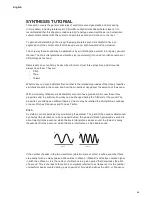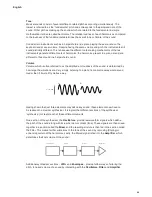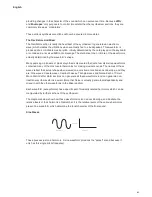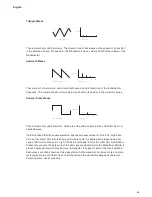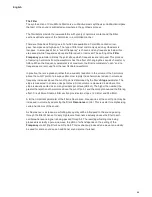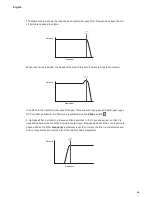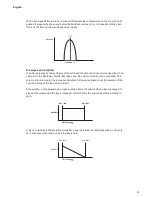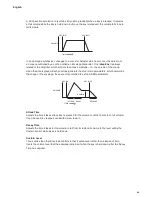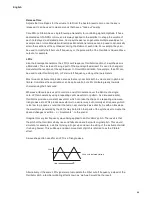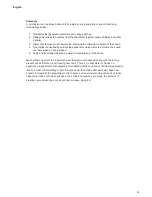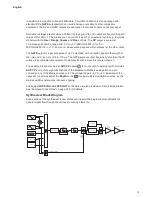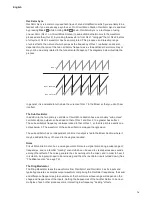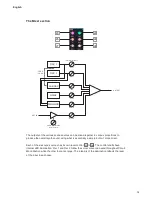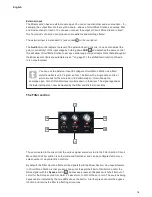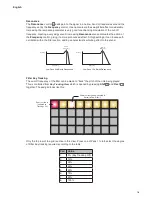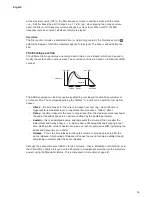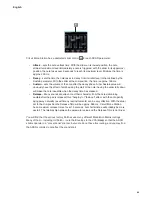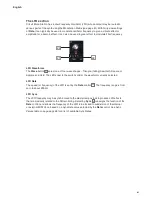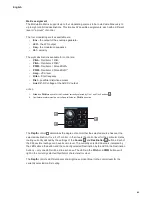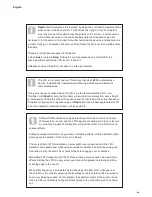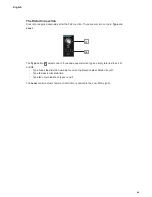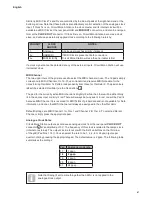
73
English
The Oscillator section
16
17
18
19
Circuit Mono Station’s Oscillator section consists of two identical primary oscillators, plus a
“sub-octave” oscillator which is always frequency-locked to Oscillator 1. The primary oscillators,
Osc 1 and Osc 2, share a single set of controls; the oscillator being controlled is selected by
the
Osc 1
and
Osc 2
buttons
5
. After adjustments have been made to one oscillator, the other
may be selected and the same controls used to adjust its contribution to the overall sound,
without altering the settings of the first. You can constantly reassign the controls between the
two oscillators until you get the sound you’re after.
The following descriptions thus apply equally to the two oscillators, depending which is
currently selected:
Waveform
The
Wave
button
17
selects one of four fundamental wave shapes - Sine, Triangle,
(rising) Sawtooth or Square/Pulse. The LEDs above the switch confirm the waveform
currently selected.
Pitch
The three controls
Range
16
,
Coarse
18
and
Fine
19
set the Oscillator’s fundamental
frequency (or Pitch). The
Range
switch is calibrated in traditional “organ-stop” units, where
16’ gives the lowest frequencies and 2’ the highest. Each doubling of stop length halves
the frequency and thus shifts the pitch down one octave. When
Range
is set to 8’, the grid
“keyboard” will be at concert pitch with Middle C on the lower, left-most pad in normal
Note
View
.
The
Coarse
and
Fine
rotary controls adjust the oscillator pitch over a range of ±1 octave and
±1 semitone respectively.
Pulse Width
When the Oscillator waveform is set to Square/Pulse, the timbre of the “edgy” square wave
sound can be modified by varying the pulse width, or duty cycle, of the waveform.
When a Square/Pulse wave is selected, the duty cycle (pulse width) of the waveform can be
varied manually by holding down the
Shift
button
15
and adjusting the Oscillator
Fine
control
19
. Extreme clockwise and anticlockwise settings produce very narrow positive or negative
pulses, with the sound becoming thinner and more “reedy” as the control is advanced.
Pulse width may also be modulated automatically by various synth sources within the
Modulation Matrix: see page 81.
Summary of Contents for Circuit Mono Station
Page 1: ......
Page 93: ...93 English...

